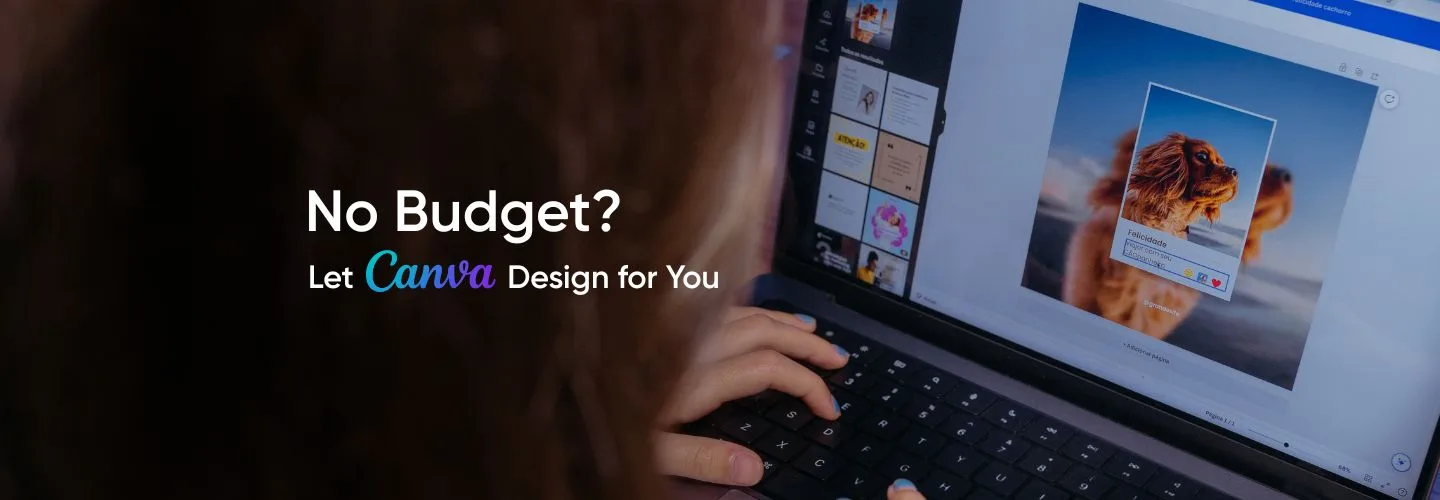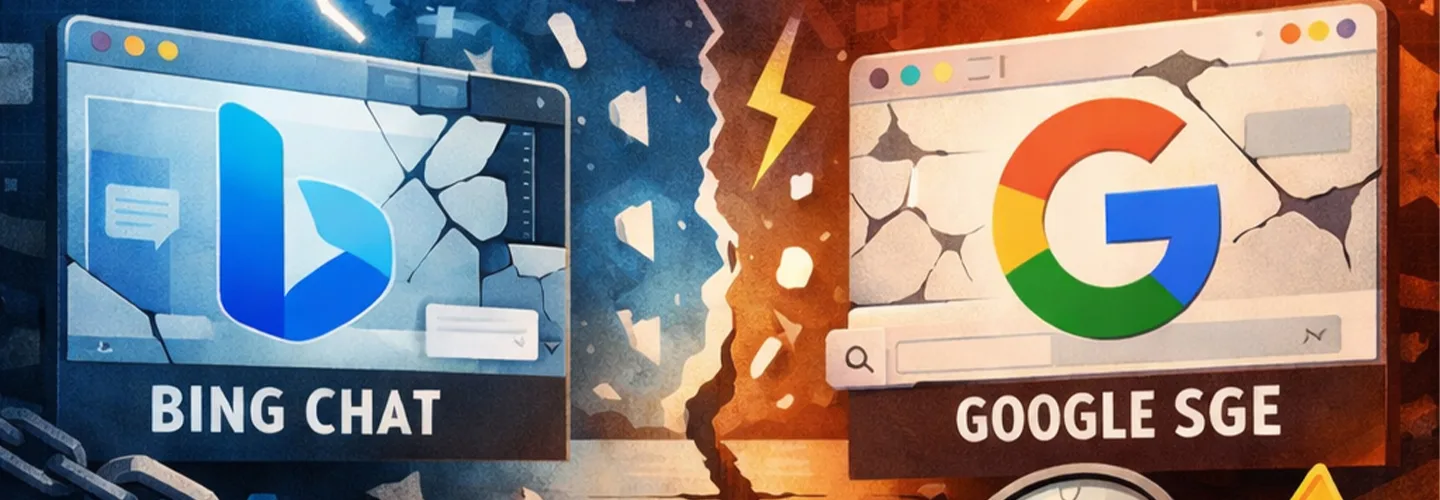How Canva Can Be Your Graphic Designer If You Have No Budget

We have all been there: you need professional-looking graphics for your business or side hustle, but hiring a designer is nowhere near the budget.
That’s where Canva steps in, not as a tool, but as your design co-founder.
Over the past decade, Canva has quietly become the most democratic design platform in the world. It’s what Figma did for UI: simple, visual, and collaborative, but for everything from Instagram posts to pitch decks.
And in a world where design agencies quote ₹20,000 for a single carousel, Canva is giving small businesses the creative superpower they couldn’t otherwise afford.
Why Canva is a Game Changer for Non-Designers

You don’t have to be a designer to make something beautiful. That’s the whole point.
Canva has flattened the learning curve of graphic design. It’s not just about making visuals, it’s about unlocking confidence in people who never thought they could design.
Here’s why founders, marketers, and solo creators swear by it:
1. Templates That Kill Creative Block
The hardest part of design isn’t knowing colors or fonts, it’s the blank page.
Canva solves that instantly with thousands of templates across formats, pitch decks, ad creatives, business cards, and even Instagram reels.
They are not just quick hacks; they are well-structured frameworks built by professionals.
A Reddit user on r/thesidehustle summed it up best:
“I have made ₹30K+ selling Photoshop and Canva templates on Etsy. I just uploaded a few bundles and barely touched the shop again.”
$38k selling Photoshop and Canva templates
byu/Gold_Quantity5840 inthesidehustle
That’s not just side hustle talk, it’s proof that Canva’s templates are products in themselves.
2. Drag, Drop, Done
Canva’s interface is the reason it exploded. You don’t “design”, you move stuff around until it feels right.
Every action, from dragging an image to resizing a font, is intuitive. It’s designed without intimidation.
But even power users on Reddit’s r/canva note that the simplicity can be a double-edged sword:
“I find Canva one of the most frustrating tools… I haven’t been able to start and finish a project without wanting to throw it out.”
And that’s fair. Like any powerful tool, Canva rewards patience. But compared to Adobe’s steep learning curve, it’s still the fastest design ramp-up tool for beginners.
3. Zero-Budget Design That Actually Works
Let’s be honest, design tools have always been expensive. Canva flipped that narrative.
The free version is surprisingly robust, giving access to thousands of templates, photos, and fonts. The Pro version (₹499/month in India) unlocks premium assets, resizing tools, and brand kits, still cheaper than a single freelance project.
As one seller pointed out on r/EtsySellers:
“You now need a Canva Pro account to sell Canva templates on Etsy … Template link sharing is locked behind a paywall.”
You now need a Canva Pro account to sell templates
byu/pastelpaintbrush inEtsySellers
Even with that shift, the ROI is huge. Canva Pro pays for itself within a week if you are producing marketing assets regularly.
4. Everything in One Ecosystem
Every designer dreams of one platform where assets, typography, colors, and visuals live together. Canva nailed it.
You can find stock photos, shapes, fonts, icons, videos, and even AI-generated visuals, all within the same workspace.
It’s what makes it ideal for lean teams, no need to hop across Unsplash, Google Fonts, and Illustrator.
5. Customization Without Complexity
The best thing about Canva? You can be as creative or as lazy as you want.
Want to match your brand’s hex codes? Add your fonts to the Brand Kit.
Need to edit a photo? Magic Edit (its AI tool) does it with one prompt.
Want to animate your Instagram post? One click.
Even if you are skeptical, the platform’s flexibility converts people fast.
A user on r/sidehustle questioned its scalability:
“Does selling Canva templates really work? For every success story, there are 50 clones.”
Does making Canva templates really work?
byu/black_cat_ramen insidehustle
And they are right, success in Canva comes from originality, not templates alone.
But for small brands, the point isn’t to “beat” Canva creators. It’s to make your own marketing better, faster.
6. Team Collaboration That Feels Natural
For in-house marketing teams, Canva’s collaboration tools are a godsend.
Share a design link, leave comments, and iterate live; it’s the Google Docs of visual content.
You can build a consistent visual identity without needing a designer for every edit.
Even after a subscription ends, template access remains, confirmed by users on r/canva:
“Template links created while on an eligible sub remain accessible even on free … even when your sub lapses.”
That means your old assets keep working, even after your budget runs dry.
7. Canva’s Real Secret: It’s a Mindset Shift
The biggest misconception about Canva is that it “kills creativity.” In truth, it democratizes it. On YouTube, creators show how Canva saves hours weekly, automating visuals, syncing formats, and freeing teams from constant dependency. For instance, check out “How To Make Thumbnails Like Ali Abdaal With Canva”, a recent tutorial that breaks down how to replicate high-performing visuals with ease.
This isn’t about replacing designers; it’s about replacing dependency. You don’t need a big team, just smart systems that let you create quickly, consistently, and with creative control.
8. The AI Layer Is the Next Wave
Canva isn’t stopping at drag-and-drop. Its AI suite, Magic Write, Magic Media, and Brand Voice, make it an emerging creative assistant.
You can generate social copy, create images from text prompts, or automatically brand-match content.
For lean marketing teams, this is gold.
By late 2025, tools like Canva and ChatGPT’s image extensions are making “design thinking” less about skill, more about prompt literacy.
In short, Canva isn’t replacing designers. It’s empowering founders to think like one.
From Hustle Tool to Brand Builder
When you look at Canva through a founder’s lens, it’s not just a “design shortcut.”
It’s a creative infrastructure tool that scales with you.
Small teams use it to launch.
Mid-sized brands use it to scale.
Enterprises use it to maintain visual consistency across distributed teams.
And now, with Canva Docs, Video, and Whiteboards, it’s creeping into the workflow space once owned by Notion and Figma.
It’s not just about making pretty things anymore; it’s about aligning visuals with business velocity.
A great example comes from the YouTube channel The Futur, where design educators explained why Canva “democratized good taste.”
“It didn’t make everyone a designer,” they said, “it made everyone aware of design.”
That’s a subtle but powerful distinction, and one founders should take seriously. Because in a world flooded with AI-generated content, taste is the new edge.
What Founders Should Take Away
We are in an era where every startup is a media company. The speed of design and content production matters more than ever. Canva is how you stay fast without falling apart visually.
But, here’s the opinionated bit: Canva won’t fix poor messaging or unclear brand positioning. If your content lacks clarity, no template will save it.
Use Canva to enhance storytelling, not replace it.
So, instead of thinking “we can’t afford a designer,” think:
“We can afford to design better stories.”
And Canva is the easiest bridge to get there.
Let’s Take This Conversation Further
Canva is proof that the design landscape has shifted from elitism to accessibility. You don’t need expensive software or years of training; you just need a good eye and a willingness to iterate.
We have used it for client campaigns, internal projects, and even quick mockups that turned into viral content. The lesson? Design doesn’t start with tools; it starts with intent.
If you have built something cool with Canva or found a creative hack others should know, share it with us on LinkedIn.
Let’s keep exploring how tools like Canva, powered by AI and community, are redefining what “design expertise” even means.
Because honestly?
The best designer you’ll ever hire might just be you, with Canva quietly running in the background.



